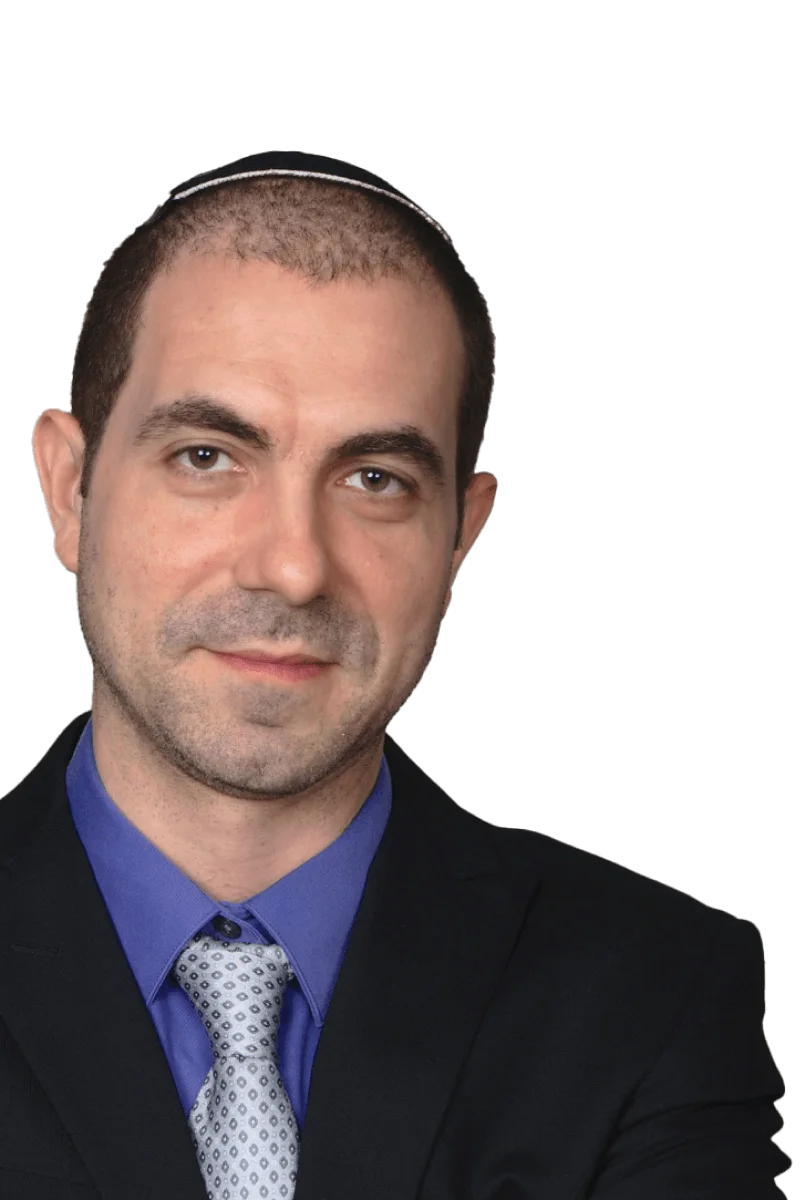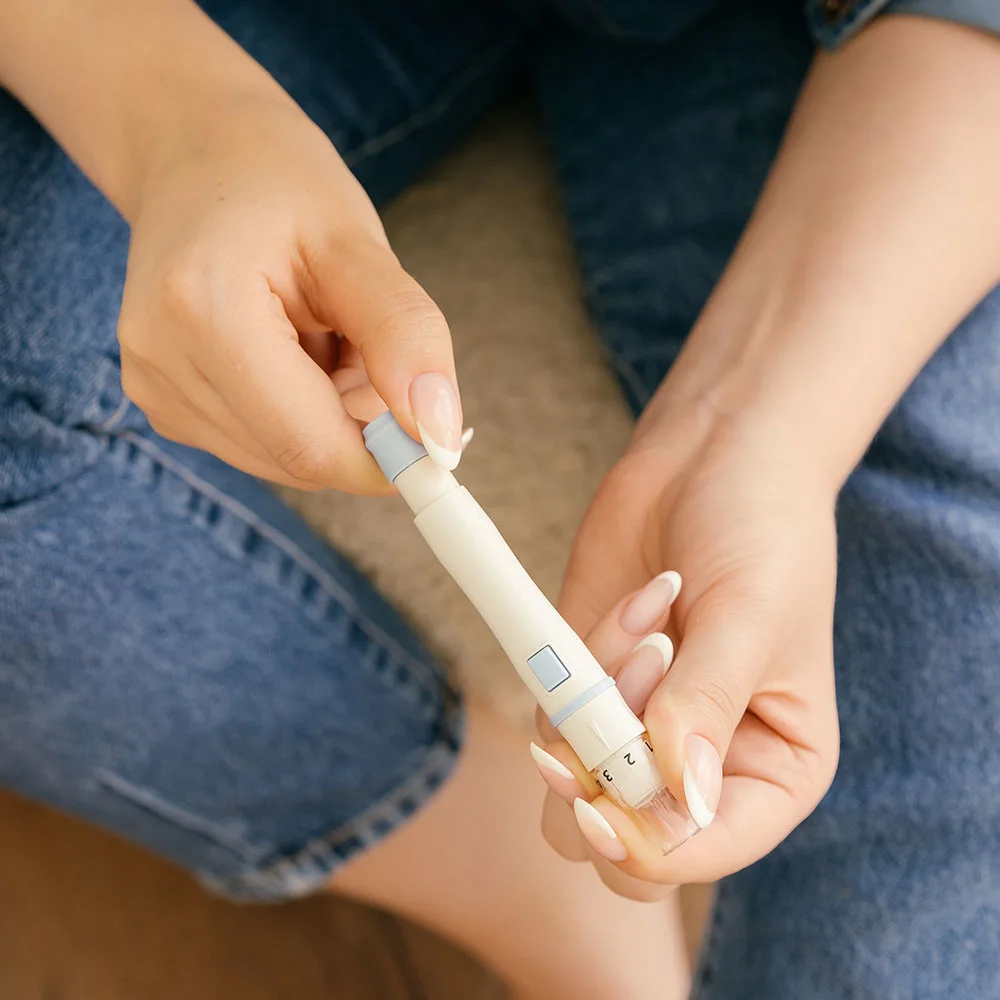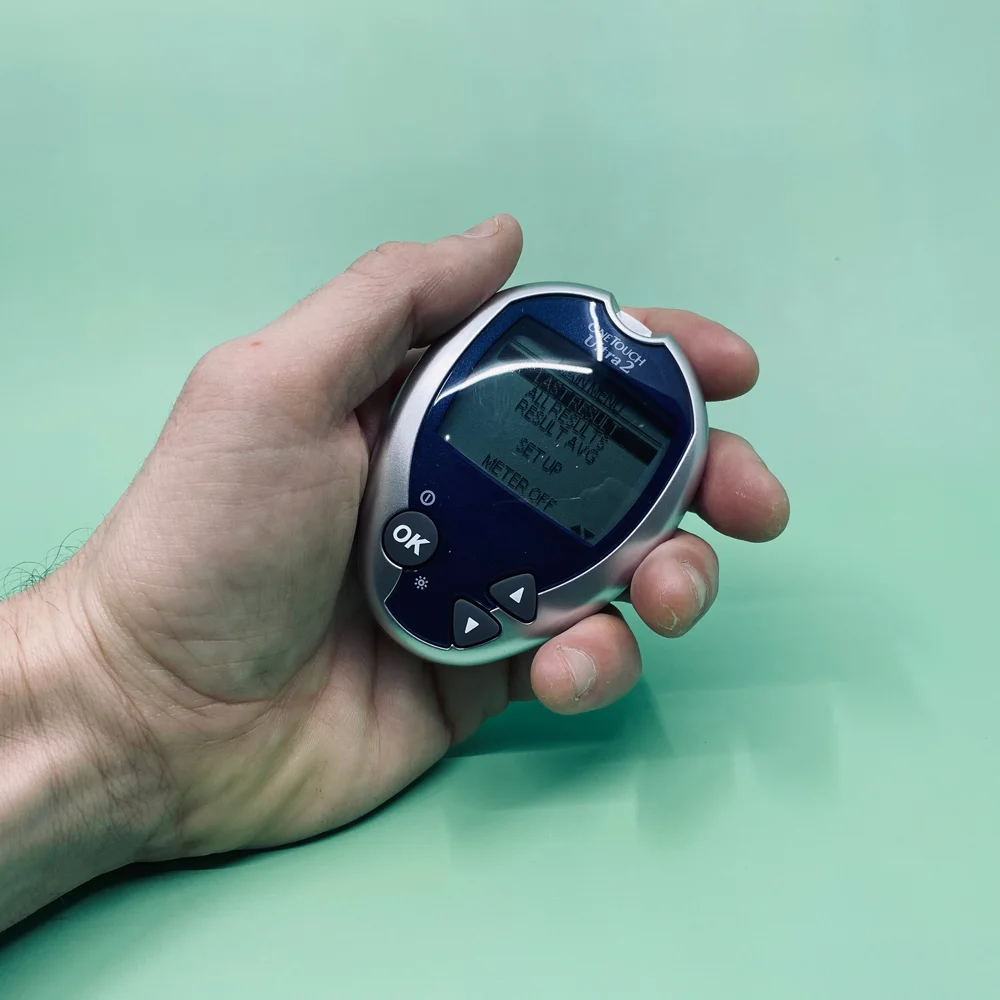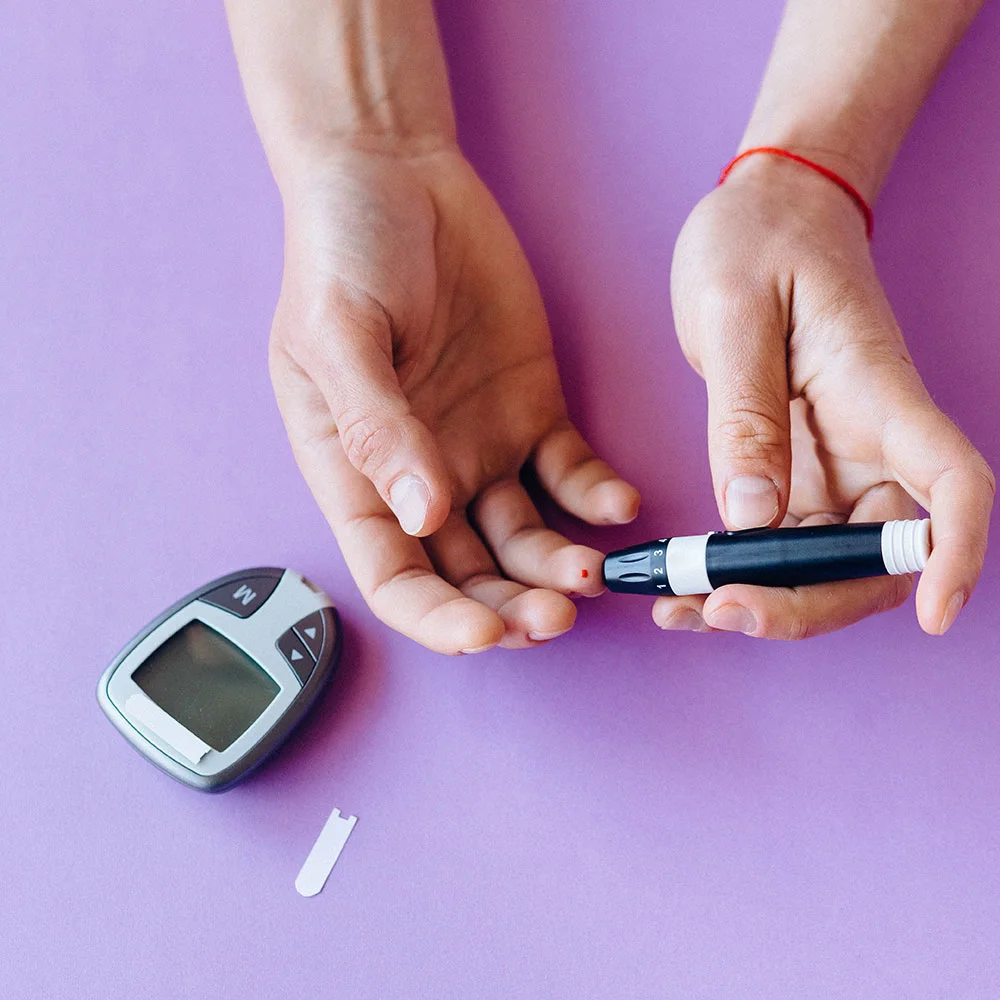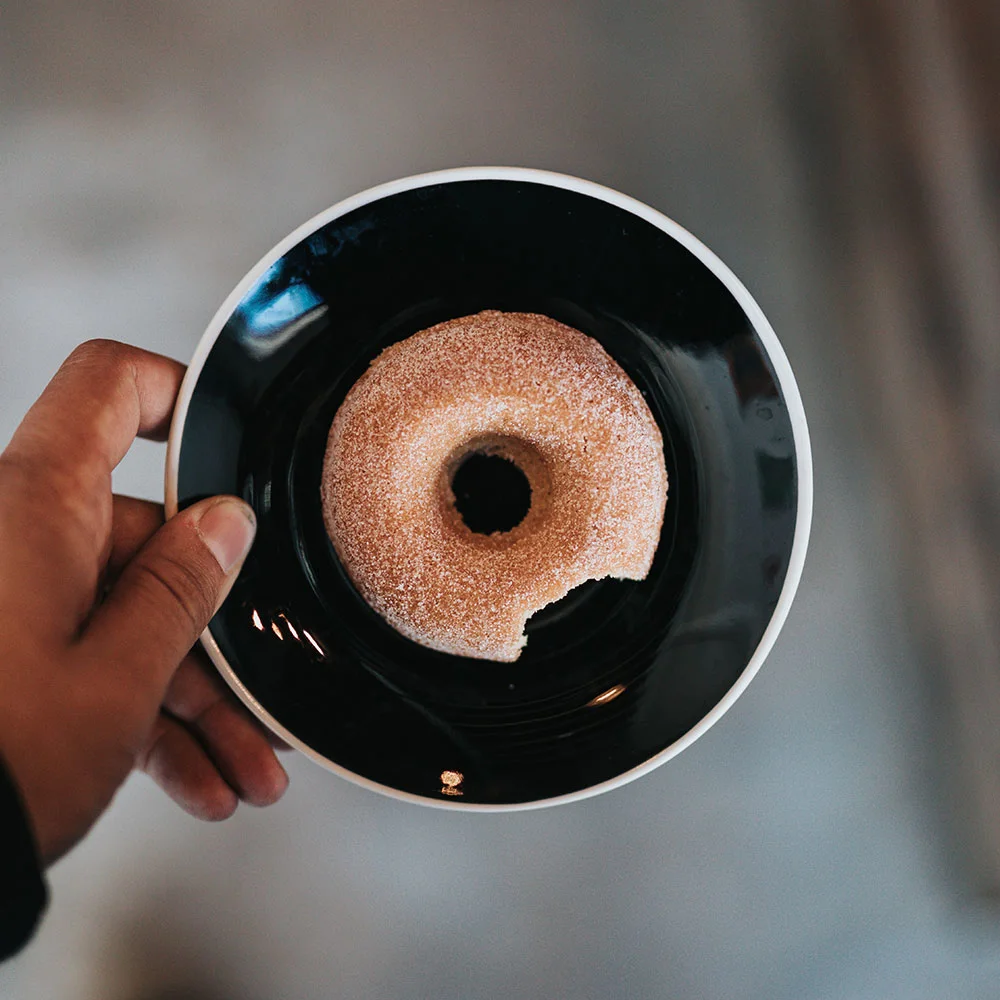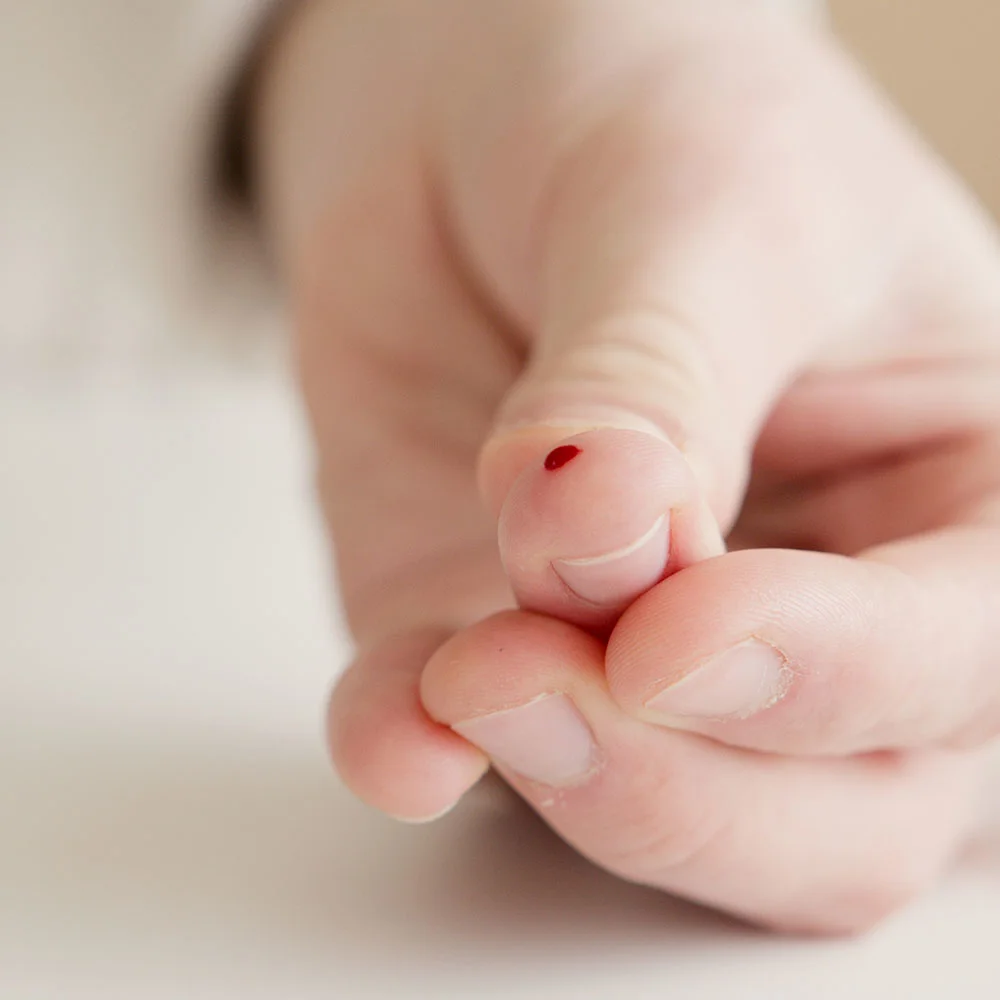Here's what we'll cover
Here's what we'll cover
The term “hyperglycemia” refers to a state in which blood sugar levels are above the normal range. To break the word apart, “hyper-“ means there is an excess of something, “-glyc-” comes from glucose (the measured form of sugar in the blood), and “-emia” refers to something that is in the blood. Hyperglycemia is usually talked about in the context of diabetes, but a few other things can cause it as well. Hyperglycemia is the opposite of hypoglycemia, which is when blood sugar levels are too low. Although some of the symptoms may be similar, the causes and treatments are very different.
In a healthy person, normal blood sugar levels (also referred to as blood glucose levels) are 70–99 mg/dL when fasting (not eating or drinking for at least eight hours) or <140 mg/dL two hours after eating (postprandial or reactive hyperglycemia). Anything above this can classify as hyperglycemia, although there is a wide range of possible values and what they mean. For example, if your blood sugar is 100–125 mg/dL when fasting it may mean you have prediabetes and if your blood sugar is >125 mg/dL when fasting it may mean you have type 1 diabetes mellitus (T1DM) or type 2 diabetes mellitus (T2DM). This is called the fasting plasma glucose (FPG) test and is a screening test that can be done to detect diabetes.
Similarly, if your blood sugar is 140–199 mg/dL two hours after eating it may mean you have prediabetes and if your blood sugar is >199 mg/dL two hours after eating it may mean you have T1DM or T2DM. This is called the oral glucose tolerance test (OGTT) and is another screening test that can be done to detect diabetes. In addition to these values, many secondary websites consider 180 mg/dL as the cutoff for defining hyperglycemia and suggest that prolonged blood sugar over this amount is when symptoms set in. However, this cutoff is not well established. Blood sugar can go as high as >250 mg/dL and even >600 mg/dL. These levels are typically associated with medical emergencies, as we’ll discuss a little later.
How is blood sugar regulated?
When you eat food (specifically when you eat sugars or carbohydrates, which get broken down into sugars), your blood sugar levels rise. The body then does its best to regulate these levels. Two hormones, glucagon, and insulin are primarily responsible for this regulation.
When blood sugar levels are low: In response to low levels, the hormone glucagon is released from alpha cells in the pancreas. Glucagon works to raise blood sugar levels by stimulating the liver to turn glycogen into glucose. Glycogen is a storage form of glucose that your body can make when glucose levels are high.
When blood sugar levels are high: In response to high levels, the hormone insulin is released from beta cells in the pancreas. Insulin works to lower blood sugar levels in the body by acting on fat, liver, and muscle cells and prompting them to take up glucose and either use it as energy or store it as glycogen.
What are the causes of hyperglycemia?
By far the most common cause of hyperglycemia is an issue with the hormone insulin, and this is also what leads to diabetes. In T1DM, the pancreas is unable to make insulin (T1DM is an autoimmune disease). In T2DM, the pancreas produces insulin, but the body’s tissues do not respond to it as well. And gestational diabetes is hyperglycemia/diabetes that is brought on by pregnancy.
We’ve already discussed how insulin helps to lower blood sugar by moving glucose into fat, liver, and muscle cells. Without insulin, or when the body’s tissues are less sensitive to insulin (a condition called insulin resistance), this does not happen as well, leading to an increase in the amount of glucose that remains in the blood. Insulin resistance, in turn, is influenced by genetics, body mass index (BMI), fat distribution, level of activity, and possibly other factors.
People who do not have diabetes can also have high blood sugar, although this is typically in direct response to something else going on in the body. If you have an infection, are stressed, have issues with the adrenal glands, or are taking certain medications like steroids (e.g., prednisone/Deltasone, methylprednisolone/Solu-Medrol), you may be hyperglycemic.
What are the signs and symptoms of hyperglycemia?
Sometimes, you can have hyperglycemia without knowing it. However, the higher your blood sugar goes or, the longer it stays there, the more likely you are to show symptoms.
The symptoms of hyperglycemia parallel the symptoms of diabetes and include:
Increased thirst (polydipsia)
Frequent urination (polyuria)
Extreme hunger (polyphagia)
Lack of energy
Weight loss
If you have T2DM, you may not realize you have been hyperglycemic until other symptoms show up, which are the result of the complications of diabetes. These include:
Vision changes
Numbness, tingling, or pain in the extremities
Difficulty healing
Frequent infections
Heart disease or blood vessel problems
Over time, the excess sugar in the bloodstream damages the blood vessels. In diabetes, this can lead to eye problems (diabetic retinopathy), nerve problems (diabetic neuropathy), and kidney problems (diabetic nephropathy, which call lead to hemodialysis or kidney transplantation). Diabetes is also a risk factor for many diseases including cardiovascular disease.
One of the dangerous complications of hyperglycemia is a condition called diabetic ketoacidosis (DKA). DKA typically affects people with T1DM, but it can occur in those with T2DM as well. In DKA, blood sugar levels may be >250 mg/dL. However, because insulin is not pushing the glucose into cells, the body turns to fatty acids for energy. The byproducts of fatty acid breakdown are ketones, which are acidic compounds that accumulate in the blood. The symptoms of DKA include fruity breath, drowsiness, lethargy, abdominal pain, and vomiting. DKA is an emergency that, if left untreated, can lead to death.
Another dangerous complication of hyperglycemia is a condition called diabetic hyperosmolar hyperglycemic state (HHS). HHS typically affects people with T2DM and can be triggered by an infection or by being noncompliant with diabetes medications. In HHS, blood sugar levels may be >600mg/dL. The symptoms of HHS include increased thirst, frequent urination, fever, drowsiness, confusion, vision changes, and coma. Like DKA, HHS is an emergency requiring medical attention.
How can hyperglycemia be prevented?
In people with diabetes, hyperglycemia can be prevented by staying compliant with diabetes medications. If you are on insulin, regularly checking blood sugar levels is essential and is one way to see if your levels are getting too high. It is also important to pay attention to what you eat and how much you are exercising.
Let’s talk about food. The glycemic index is one measure by which you can tell how much a food will affect your blood sugar levels. The glycemic index is a score from 0–100 given to foods that have carbohydrates, and the higher the score, the more potential the food has to spike your blood sugar. The glycemic load is a similar number that is calculated from the glycemic index. However, glycemic load factors in the actual amount of carbs you are eating and therefore may give an even better understanding of how the food will affect your blood glucose.
Regarding exercise: Your activity level throughout the day plays a role in your blood sugar level. Therefore, if you have a decrease in your physical activity, it may be necessary to increase some of your diabetes medications or modify how you eat. Talk to your healthcare provider if you think this may apply to you.
How is hyperglycemia treated?
In the short term, mild hyperglycemia can be treated with exercise.
Long term, hyperglycemia is treated with a variety of medications that are geared towards reducing blood sugar levels. People with T1DM rely on insulin as treatment since they are unable to make any of their own. While some people with T2DM may also require insulin, there are several other oral and injectable classes of medications that work in the body through a variety of methods to keep levels low. These include metformin, alpha-glucosidase inhibitors, bile acid sequestrants, dopamine-2 agonists, DPP-4 inhibitors, GLP-1 receptor agonists, meglitinides, sulfonylureas, SGLT2 inhibitors, and thiazolidinediones.
Since DKA and HHS are medical emergencies, treatment requires being at a healthcare facility (and possibly in an intensive care unit, or ICU). Treatment of these conditions is geared towards decreasing sugar levels without letting it get too low, correcting electrolyte imbalances, and providing rehydration. Therapy may include intravenous fluids, insulin, glucose (to make sure it doesn’t go too low), and potassium.
If hyperglycemia is due to some other problem such as infection, stress, or an issue with the adrenal glands, management is geared towards addressing the underlying cause.
DISCLAIMER
If you have any medical questions or concerns, please talk to your healthcare provider. The articles on Health Guide are underpinned by peer-reviewed research and information drawn from medical societies and governmental agencies. However, they are not a substitute for professional medical advice, diagnosis, or treatment.

